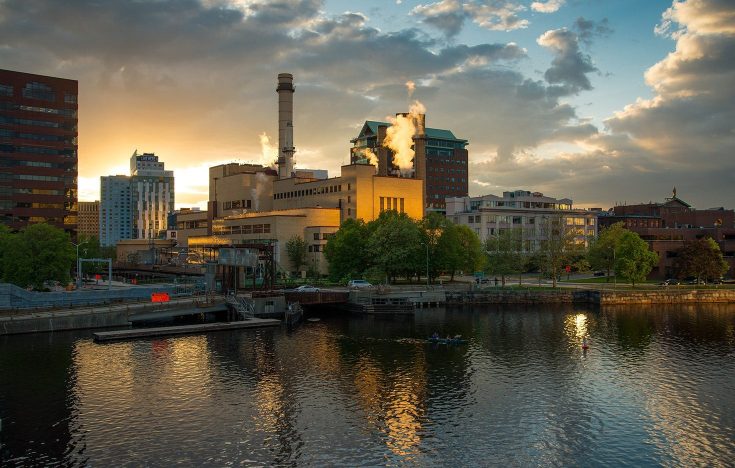With residential and commercial buildings contributing to 12.5% of total US greenhouse gas emissions[1], district energy will significantly decarbonise cities, neighborhoods, and college campuses across America. District energy systems provide a more efficient and sustainable way to provide heating and cooling services to buildings, campuses, and customer populations. Through these systems, a central facility produces thermal energy distributed via an underground piping network to deliver steam, hot water, or chilled water to buildings. This approach optimises energy efficiency and local resources while significantly reducing pollution.
Vicinity Energy, which holds the most extensive portfolio of district energy systems in the US, is further investing in the future of this technology to sustainably power local areas across the country. The firm recently amended its credit facilities and incorporated Green Loan Principles to the US$80 million CAPEX tranche. It marked the first green loan transaction for a district energy company in the US. BNP Paribas acted as Coordinating Lead Arranger, Bookrunner, and green loan Coordinator on the financing package.
Investing in cleaner energy
Vicinity Energy will use the funds from the green loan to support investments compliant with the EU Taxonomy guidelines, another step in the firm’s plan to reach net zero carbon emissions for all of its operations by 2050. The company’s decarbonisation and electrification plan focuses on several strategies to achieve net zero, including using biogenic fuels as an alternative to fossil fuels, electrifying generation, and exploring emerging technologies. Vicinity reached a crucial milestone in April with the launch of eSteam™, the first-ever carbon-free thermal energy product powered by renewable energy sources such as wind, solar and hydro.

BNP Paribas is proud to support Vicinity Energy on its programme to decarbonise infrastructure and invest in energy-efficient assets as a key part of the firm’s journey to net zero.
Anne van Riel, Head of Sustainable Finance Capital Markets Americas, BNP Paribas
Vicinity Energy owns, operates, and maintains district energy systems across the U.S., providing services to more than 230 million square feet of building space. The firm’s activities cover primarily core downtown areas in 12 major cities, including Baltimore, Boston, Cambridge, Grand Rapids, Kansas City, Oklahoma City, and Philadelphia, to name a few. Through the new green loan, Vicinity will use funds to support eligible green projects across its district energy systems using renewable energy, waste heat, cogenerated heat, or a combination of these.
The key benefits of district energy are reliability and sustainability: the central distribution facility eliminates the need for boiler and chiller plants in individual buildings, reducing fuel consumption and lowering carbon emissions at the building level. Because district energy systems are agile and agnostic to fuel sources, they are uniquely positioned to transition quickly to new clean energy technologies as they become available. As each district energy system serves several buildings in its network, district energy systems can drive carbon emissions reductions at scale – neighborhood by neighborhood, rather than one building at a time.

As the shift towards a low carbon world accelerates, we anticipate much activity and capital investment in the District Energy sector. District energy has the potential to provide critical infrastructure services to commercial and institutional customers who want to implement ambitious long-term sustainability objectives.
Ravina Advani, Head of the Low Carbon Transition Group Americas, BNP Paribas
The potential of district energy continues to attract significant investment interest. In spring 2022, private equity firm KKR closed its acquisition of Clearway Community Energy, a Princeton, N.J.-based district energy platform providing chilled water, steam, hot water and electricity to commercial customers across 13 operating systems in 11 US cities. With the recently signed Inflation Reduction Act providing incentives for clean energy investment in the US, district energy is poised to grow further across the country in the years ahead.
In December 2019, Vicinity was acquired by Antin Infrastructure Partners, a private equity firm focused on infrastructure investments worldwide. Antin recently moved forward with its latest investment in the energy transition, announcing that its Flagship Fund V will become the new majority shareholder in Blue Elephant Energy.
Hamburg-based Blue Elephant Energy is a renewable energy platform focused on developing, acquiring, and operating solar and wind farms across Europe and Latin America. The firm operates 67 solar and 13 wind power plants in eight countries with a power generation capacity of around 1.3 GW.
[1] The US Environmental Protection Agency: Sources of Greenhouse Gas Emissions | US EPA
